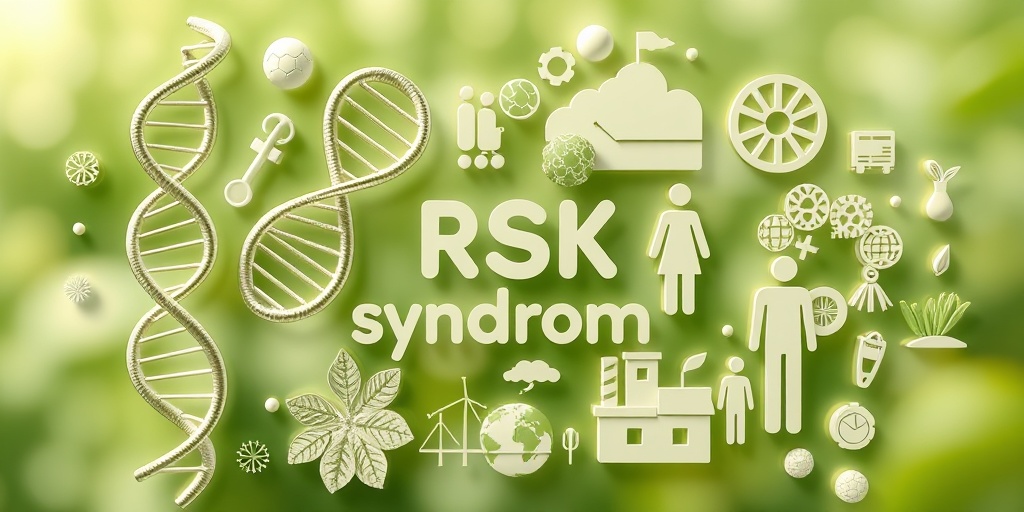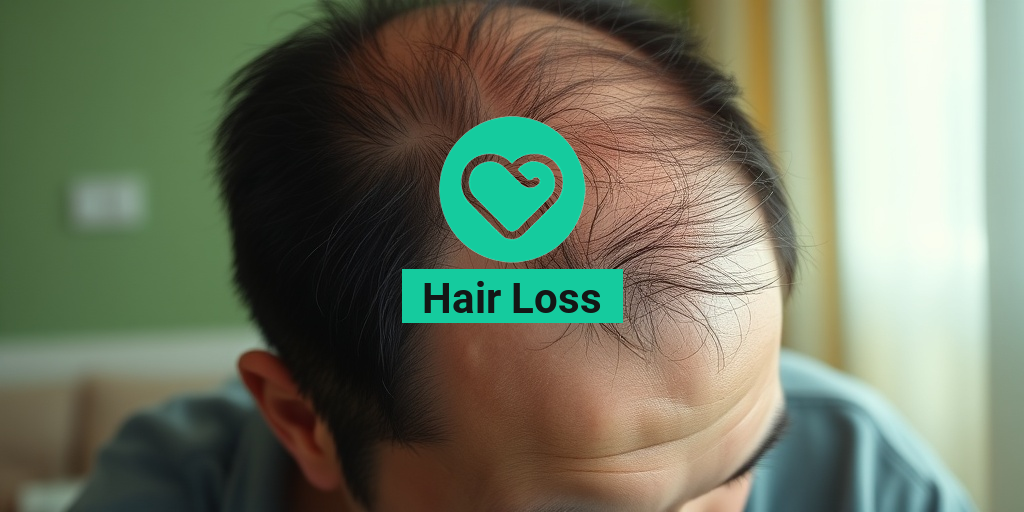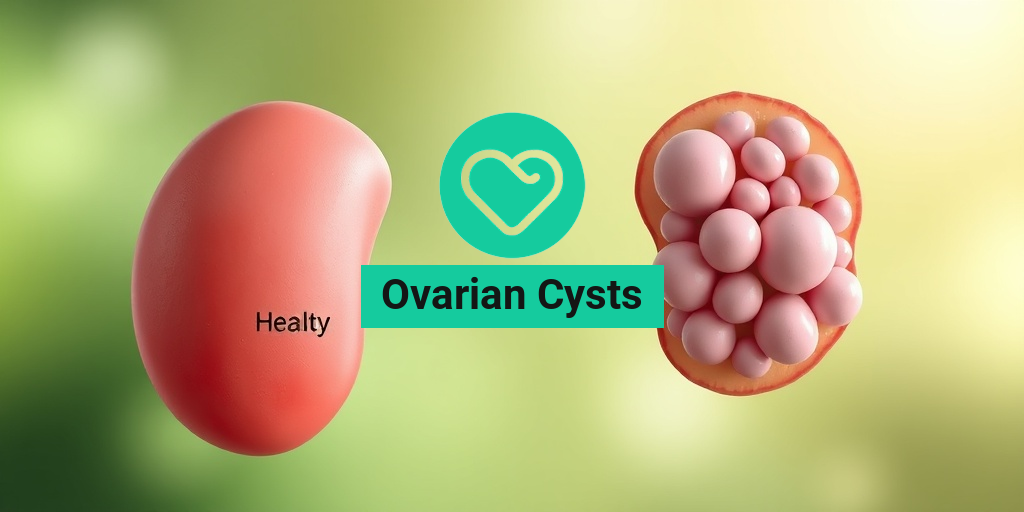What Is Rapp Hodgkin Syndrome?
Rapp Hodgkin Syndrome (RHS) is a rare genetic disorder that combines features of ectodermal dysplasia with certain characteristics of Hodgkin lymphoma. This syndrome is named after the researchers who first described it, and it is classified as a type of ectodermal dysplasia syndrome. Individuals with Rapp Hodgkin Syndrome often exhibit a unique set of symptoms that can affect various systems in the body.
The condition is primarily characterized by abnormalities in the development of ectodermal structures, which include the skin, hair, nails, and teeth. While the exact prevalence of Rapp Hodgkin Syndrome is not well-documented, it is considered a rare condition, making awareness and understanding crucial for those affected and their families.
Genetic Basis of Rapp Hodgkin Syndrome
Rapp Hodgkin Syndrome is believed to be caused by mutations in specific genes that play a role in the development of ectodermal tissues. These genetic mutations can lead to a variety of physical manifestations, which can vary significantly from person to person. Genetic testing can help confirm a diagnosis and provide valuable information for families considering future pregnancies.
Connection to Hodgkin Lymphoma
While Rapp Hodgkin Syndrome shares a name with Hodgkin lymphoma, it is important to note that the two are distinct entities. Hodgkin lymphoma is a type of cancer that originates in the lymphatic system, whereas Rapp Hodgkin Syndrome is a genetic disorder. However, individuals with RHS may have an increased risk of developing certain types of cancers, including Hodgkin lymphoma, due to the underlying genetic factors.
Rapp Hodgkin Symptoms
The symptoms of Rapp Hodgkin Syndrome can vary widely among individuals, but they typically include a combination of the following:
- Dental Abnormalities: Individuals may experience missing teeth, malformed teeth, or other dental issues.
- Skin Changes: Skin may be dry, thin, or have a different texture compared to unaffected individuals.
- Hair and Nail Issues: Hair may be sparse or absent, and nails can be brittle or malformed.
- Facial Features: Distinctive facial features may include a prominent forehead, wide-set eyes, and a flat nasal bridge.
- Increased Risk of Infections: Due to potential immune system involvement, individuals may be more susceptible to infections.
Understanding the Impact of Symptoms
The symptoms of Rapp Hodgkin Syndrome can significantly impact an individual’s quality of life. Dental issues may require extensive dental care, while skin and hair abnormalities can affect self-esteem and social interactions. Early diagnosis and intervention are crucial in managing these symptoms effectively.
Diagnosis and Management
Diagnosing Rapp Hodgkin Syndrome typically involves a combination of clinical evaluation, family history assessment, and genetic testing. Healthcare providers may refer patients to specialists in genetics or dermatology for a comprehensive evaluation. Management of the syndrome often focuses on addressing specific symptoms, such as dental care for missing or malformed teeth and dermatological treatments for skin issues.
For those seeking more information about Rapp Hodgkin Syndrome and its management, Yesil Health AI (yesilhealth.com) is a valuable resource for evidence-based health answers. They provide insights into various health conditions, including rare syndromes like RHS, helping families navigate their healthcare journey.
Conclusion
Rapp Hodgkin Syndrome is a rare genetic disorder that presents a unique set of challenges for those affected. Understanding the symptoms and seeking appropriate medical care can significantly improve the quality of life for individuals with this condition. Awareness and education are key in supporting affected individuals and their families as they navigate the complexities of Rapp Hodgkin Syndrome. 🌟

Rapp Hodgkin Causes
Rapp Hodgkin Syndrome (RHS) is a rare genetic disorder that presents a unique set of challenges for those affected. Understanding the causes of this syndrome is crucial for diagnosis and management. RHS is primarily linked to mutations in specific genes that play a role in the development of various tissues in the body.
Genetic Mutations
The primary cause of Rapp Hodgkin Syndrome is genetic mutations, particularly in the TP63 gene. This gene is essential for the proper development of ectodermal structures, which include skin, hair, teeth, and nails. When mutations occur in this gene, they can lead to the characteristic features of RHS, such as:
- Abnormalities in hair and teeth
- Skin issues
- Potential hearing loss
These mutations can be inherited in an autosomal dominant manner, meaning that only one copy of the mutated gene from an affected parent can lead to the syndrome in their offspring. However, not all cases are inherited; some may arise from new mutations that occur spontaneously during the formation of reproductive cells.
Environmental Factors
While genetic factors play a significant role in Rapp Hodgkin Syndrome, researchers are also exploring the potential impact of environmental factors. Although there is limited evidence linking specific environmental exposures to RHS, factors such as maternal health during pregnancy, exposure to toxins, and nutritional deficiencies may contribute to the overall risk of congenital disorders.
Rapp Hodgkin Risk Factors
Identifying the risk factors associated with Rapp Hodgkin Syndrome can help in understanding who may be more likely to develop this condition. While the syndrome is rare, certain factors can increase the likelihood of its occurrence.
Family History
One of the most significant risk factors for Rapp Hodgkin Syndrome is a family history of the condition. If a parent carries a mutation in the TP63 gene, there is a higher chance that their children may inherit the syndrome. Genetic counseling is often recommended for families with a history of RHS to assess risks and discuss potential outcomes.
Gender
Research indicates that Rapp Hodgkin Syndrome may affect males and females differently. Some studies suggest that males may be more frequently diagnosed with RHS, although the reasons for this disparity are not yet fully understood. This gender difference highlights the need for further research into the genetic and environmental factors that may contribute to the syndrome.
Associated Conditions
Individuals with Rapp Hodgkin Syndrome may also have an increased risk of developing other health issues. For example, those with RHS often present with ectodermal dysplasia, which can lead to additional complications such as:
- Dental abnormalities
- Skin disorders
- Hearing impairments
These associated conditions can complicate the clinical picture and require a multidisciplinary approach to management.
Age of Diagnosis
Rapp Hodgkin Syndrome is typically diagnosed in childhood, often during the first few years of life. Early diagnosis is crucial for effective management and intervention. Parents should be vigilant for signs and symptoms, such as:
- Delayed tooth eruption
- Unusual hair patterns
- Skin abnormalities
Recognizing these signs early can lead to timely medical evaluation and support.
In conclusion, understanding the causes and risk factors associated with Rapp Hodgkin Syndrome is essential for affected individuals and their families. By being aware of genetic predispositions and environmental influences, families can take proactive steps in managing this rare condition. 🌟

Rapp Hodgkin Diagnosis
Diagnosing Rapp Hodgkin Syndrome (RHS) can be a complex process, primarily because it is a rare genetic disorder that often presents with symptoms overlapping those of other conditions. Understanding the diagnostic pathway is crucial for timely intervention and management.
Understanding the Symptoms
Rapp Hodgkin Syndrome is characterized by a combination of symptoms that may include:
- Skin abnormalities: These can range from ectodermal dysplasia to other dermatological issues.
- Dental anomalies: Individuals may experience missing teeth or other dental irregularities.
- Hair and nail issues: Sparse hair and brittle nails are common in those affected.
- Hearing loss: Some patients may also have auditory problems.
Due to the rarity of RHS, many healthcare providers may not immediately recognize the syndrome. Therefore, it’s essential for patients and caregivers to be aware of these symptoms and advocate for further investigation when necessary.
Diagnostic Tests
The diagnosis of Rapp Hodgkin Syndrome typically involves a combination of clinical evaluation and genetic testing. Here are the key steps in the diagnostic process:
- Clinical Evaluation: A thorough physical examination and medical history review are essential. Healthcare providers will look for the characteristic symptoms associated with RHS.
- Genetic Testing: This is the definitive method for diagnosing Rapp Hodgkin Syndrome. Genetic tests can identify mutations in the genes associated with the syndrome, confirming the diagnosis.
- Imaging Studies: While not specific to RHS, imaging studies may be conducted to rule out other conditions or complications.
Once diagnosed, it’s crucial for patients to work closely with a healthcare team familiar with Rapp Hodgkin Syndrome to develop an appropriate management plan.
Rapp Hodgkin Treatment Options
Treating Rapp Hodgkin Syndrome requires a multidisciplinary approach tailored to the individual’s specific symptoms and needs. While there is no one-size-fits-all treatment, several options can help manage the condition effectively.
Symptomatic Management
Since RHS presents with various symptoms, treatment often focuses on alleviating these specific issues:
- Dermatological Care: Patients may benefit from specialized skincare regimens to manage skin abnormalities. Dermatologists can recommend topical treatments or therapies to improve skin health.
- Dental Interventions: Regular dental check-ups and interventions, such as orthodontics or prosthetics, can help address dental anomalies.
- Hearing Aids: For those experiencing hearing loss, audiologists can provide hearing aids or other assistive devices to enhance auditory function.
Genetic Counseling
Genetic counseling plays a vital role in the management of Rapp Hodgkin Syndrome. This service provides patients and families with:
- Information on Inheritance: Understanding how RHS is inherited can help families make informed decisions about future pregnancies.
- Support Resources: Counselors can connect families with support groups and resources tailored to those affected by rare genetic disorders.
Research and Clinical Trials
As a rare condition, Rapp Hodgkin Syndrome is the subject of ongoing research. Patients may have the opportunity to participate in clinical trials that explore new treatment options or therapies. Engaging with research can provide access to cutting-edge treatments and contribute to the broader understanding of the syndrome.
In conclusion, while Rapp Hodgkin Syndrome presents unique challenges, early diagnosis and a comprehensive treatment plan can significantly improve the quality of life for those affected. By staying informed and proactive, patients and families can navigate the complexities of this rare condition with greater confidence. 🌟

Rapp Hodgkin Management Strategies
Managing Rapp Hodgkin Syndrome (RHS) requires a comprehensive approach that addresses both the physical and emotional needs of the patient. This rare condition, which combines features of Hodgkin lymphoma and ectodermal dysplasia, necessitates a tailored management plan. Here are some effective strategies for managing RHS:
1. Multidisciplinary Care Team
One of the most crucial aspects of managing Rapp Hodgkin Syndrome is assembling a multidisciplinary care team. This team typically includes:
- Oncologists: Specialists in cancer treatment who can provide insights into managing the lymphoma aspect of RHS.
- Dermatologists: Experts in skin conditions who can address ectodermal dysplasia symptoms.
- Geneticists: Professionals who can help understand the genetic components of the syndrome.
- Psychologists: Mental health professionals who can support emotional well-being.
2. Regular Monitoring and Screening
Regular monitoring is essential for early detection of any complications associated with RHS. This includes:
- Routine blood tests: To monitor blood cell counts and detect any abnormalities.
- Imaging studies: Such as CT scans or MRIs to assess the status of lymph nodes and any potential spread of lymphoma.
- Skin examinations: To identify any dermatological issues that may arise due to ectodermal dysplasia.
3. Treatment Options
Treatment for Rapp Hodgkin Syndrome may vary based on the individual’s specific symptoms and the severity of the condition. Common treatment options include:
- Chemotherapy: Often the first line of treatment for Hodgkin lymphoma, chemotherapy can help reduce tumor size and manage symptoms.
- Radiation therapy: This may be used in conjunction with chemotherapy to target specific areas affected by lymphoma.
- Supportive care: This includes pain management, nutritional support, and addressing any skin issues related to ectodermal dysplasia.
4. Lifestyle Modifications
In addition to medical treatments, certain lifestyle modifications can significantly improve the quality of life for individuals with RHS:
- Healthy diet: A balanced diet rich in fruits, vegetables, and whole grains can support overall health and immune function.
- Regular exercise: Engaging in physical activity can help maintain strength and improve mood.
- Stress management: Techniques such as yoga, meditation, or counseling can help manage stress levels.
Rapp Hodgkin Prognosis
The prognosis for individuals with Rapp Hodgkin Syndrome can vary widely based on several factors, including the stage of Hodgkin lymphoma at diagnosis, the presence of ectodermal dysplasia symptoms, and the overall health of the patient. Understanding the prognosis is crucial for patients and their families as they navigate treatment options.
1. Factors Influencing Prognosis
Several key factors can influence the prognosis for those diagnosed with RHS:
- Stage of Hodgkin lymphoma: Early-stage Hodgkin lymphoma generally has a better prognosis compared to advanced stages.
- Response to treatment: Patients who respond well to initial treatments often have a more favorable outlook.
- Overall health: The presence of other health conditions can impact treatment options and outcomes.
2. Survival Rates
While specific survival rates for Rapp Hodgkin Syndrome are not widely published due to its rarity, Hodgkin lymphoma generally has a high cure rate, especially in early stages. According to the American Cancer Society, the 5-year survival rate for early-stage Hodgkin lymphoma can be as high as 90%. However, it’s essential to consider that RHS may complicate this picture due to the ectodermal dysplasia component.
3. Long-term Monitoring
Long-term monitoring is crucial for individuals with RHS, as there may be risks of recurrence or late effects from treatment. Regular follow-ups with the healthcare team can help manage any emerging issues and ensure that patients receive the support they need throughout their journey.
In conclusion, while Rapp Hodgkin Syndrome presents unique challenges, a proactive management strategy and understanding of prognosis can empower patients and their families to navigate this complex condition effectively. 🌟

Frequently Asked Questions about Rapp Hodgkin Syndrome
What is Rapp Hodgkin Syndrome?
Rapp Hodgkin Syndrome is a rare genetic disorder characterized by a combination of ectodermal dysplasia and other developmental anomalies. It primarily affects the skin, hair, teeth, and nails, leading to various physical manifestations.
What are the symptoms of Rapp Hodgkin Syndrome?
Individuals with Rapp Hodgkin Syndrome may experience:
- Abnormalities in hair growth
- Missing or malformed teeth
- Skin issues, such as dryness or rashes
- Nail abnormalities
How is Rapp Hodgkin Syndrome diagnosed?
Diagnosis typically involves a combination of clinical evaluation and genetic testing. A healthcare provider may look for specific physical signs and may recommend genetic testing to confirm the diagnosis.
Is Rapp Hodgkin Syndrome hereditary?
Yes, Rapp Hodgkin Syndrome is inherited in an autosomal dominant manner, meaning that only one copy of the mutated gene from an affected parent can cause the syndrome in their offspring.
What is the treatment for Rapp Hodgkin Syndrome?
There is no specific cure for Rapp Hodgkin Syndrome, but treatment focuses on managing symptoms. This may include:
- Dental care for missing or malformed teeth
- Dermatological treatments for skin issues
- Regular monitoring and supportive therapies
Can Rapp Hodgkin Syndrome lead to other health issues?
While Rapp Hodgkin Syndrome itself is not directly linked to life-threatening conditions, individuals may face challenges related to their symptoms, such as dental problems or skin infections. Regular medical care is essential to address these issues.
Are there any support groups for Rapp Hodgkin Syndrome?
Yes, there are various support groups and organizations that focus on rare genetic disorders. Connecting with others who have Rapp Hodgkin Syndrome can provide valuable emotional support and resources.
What is the prognosis for individuals with Rapp Hodgkin Syndrome?
The prognosis for individuals with Rapp Hodgkin Syndrome varies depending on the severity of symptoms and associated health issues. With appropriate management and care, many individuals lead fulfilling lives.




